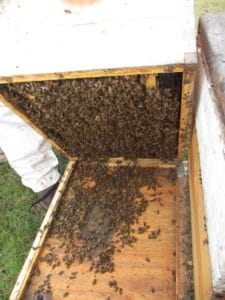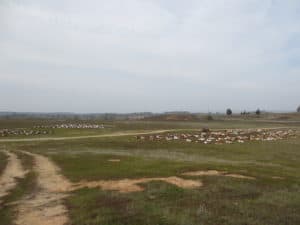Most of the commercial beekeepers in the Midwest move their colonies to southern locations for the winter, primarily to California for the pollination of almonds. I get to go where the bees go. I spent the last couple of weeks sampling beekeeper sin the San Joaquin valley in California. Beekeepers from across the nation truck bees to California to place them in the almond orchards. Just driving around, you can see all sorts of bee trucks. Most often, the truck drivers will unload in holding yards or staging yards where the colonies will wait until placement in the almond orchards.

I attended meetings held by the South Valley Bee Club and the Dale Bee Club and talked to beekeepers about how their bees were doing, listened to the talks, and heard them talk to each other. One of the most common questions beekeepers ask other beekeepers is ‘how are your bees?’ This year, the answer for many beekeepers has been not so great. Many beekeepers have been talking about losses in their own operations or in the operations of beekeepers they know., or how there is a shortage for colonies for pollination of the almond trees. Some talk about a 90% loss or more. It is heartbreaking. It will be a couple weeks yet before we really hear the full scale of what colony loses will be this year, but it is definitely going to be higher than last year.
